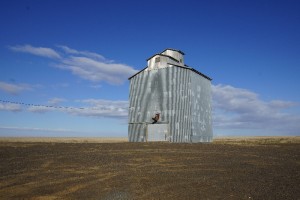 Committing to watching a documentary film is typically a risky proposition because you can find yourself unwittingly being preached to, and even worse, bored to tears. For a documentary to be good, it must both educate as well as entertain. When a documentary film is so powerful that it profoundly moves us, then it becomes great and is worthy of consideration as art. Claude Lanzmann’s Shoah immediately comes to mind as a great documentary. At 9.5 hours, it better be great!
Committing to watching a documentary film is typically a risky proposition because you can find yourself unwittingly being preached to, and even worse, bored to tears. For a documentary to be good, it must both educate as well as entertain. When a documentary film is so powerful that it profoundly moves us, then it becomes great and is worthy of consideration as art. Claude Lanzmann’s Shoah immediately comes to mind as a great documentary. At 9.5 hours, it better be great!
Some documentaries are created with the intention of inspiring people to take action in alignment with the filmmakers’ own social, political, or moral views. I’m sure you can think of more than a few from recent years that fall into this category – both from the political left as well as from the right. There’s nothing wrong with this per se, as long as the film meets the two criteria for good documentary filmmaking. The risk of being subjected to a bad viewing experience then drops considerably. However, having an agenda places the film dangerously close to becoming propaganda.
Food, Inc., produced and directed by Robert Kenner and co-produced by Eric Schlosser of Fast Food Nation, is a documentary with an agenda. There’s even a clear call to action at the end to put into practice what the filmmaker’s rail against in the film. The film has a website where discussion guides outlining the key points discussed in the film can be downloaded in case you’re sufficiently inspired to spread the message. Food, Inc. takes square aim at the “agribusiness” that is responsible for producing the vast majority of the food in America.
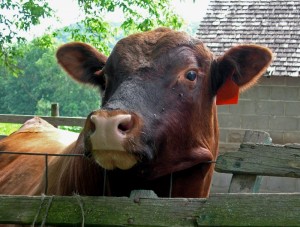
Goodbye Farmer Brown & Bessie
There’s a powerful image at the beginning of the film of silhouetted businessmen toting briefcases while marching through rows of crops towards a vast factory with billowing smokestacks off in the distance. The filmmakers disabuse us from the outset of the idyllic notion that Farmer Brown and his faithful cow Bessie are the ones sending the harvest to market. Poor old Farmer Brown is now a relic of the past. Bessie has gone off to explore greener pastures. This sets the tone for the topics raised and then discussed throughout the film.
Food and how it affects our health is a topic that I spend a great deal of my time thinking about and commenting on and Food, Inc. is a film I’ve been eager to see. The film more than adequately satisfies the first criteria of what a good documentary should be: it educates while seeming to get most of the facts right. The facts and statistics the film presents come at you fast and furiously. I haven’t been able to check each and every one, and some I have reason to question, but most seemed to be undeniable.
Below are a few that left an impression:
- McDonald’s is the largest buyer of potatoes in the world
- The fast food industry (McDonald’s) is responsible for creating agribusiness
- Chickens weigh a lot more today than they did in the 1950s. Breast size is now huge to satisfy the demand for white meat
- Chickens have become so large that many are unable to stand on their own
- Chicken tenders used to be discarded but are now used to make chicken fingers for kids
- The average poultry farmer is $500,000 in debt and only earns around $18,000 / year for the trouble
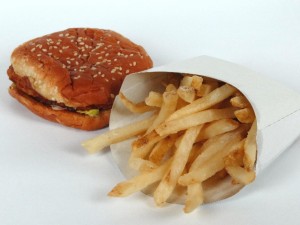
Want fries with that?
The contention that the fast food industry, led by McDonald’s, was the impetus for turning American agriculture from a family-based business to the vast agribusiness it is today seems believable, though I also wonder how much adapting to modern technology and the demands of feeding a growing population also contributed to it.
It’s the last point that I’m going to have to verify. It seems crazy that a business person would go into that much debt in order to make so little in return. I’m sure it happens, but is it as typical as the film states?
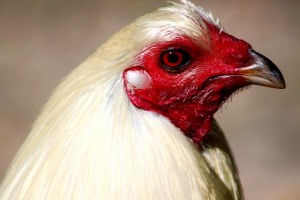
Chickens Take it Tough
The segment dealing with poultry farming is particularly disturbing. Fresh out of the egg, chicks are subjected to rough treatment as they hurtle down a conveyor belt and are tossed about by plant workers like so many widgets. They are then shipped off to be raised in stifling barracks that reek of feces and rotting bird carcasses. The windows are covered up to block out all sunlight. We are told this is done to keep the birds from getting agitated when they are rounded up for the slaughter.
A farmer that drew the line at covering up the windows of her chicken houses is eventually forced out of business by the largest poultry producer in the country: Tyson Foods. This last point also makes it clear that animals are not the only ones made to suffer. The toll taken on farmers and farm workers from exploitation and harsh working conditions is a key point brought out in the film.
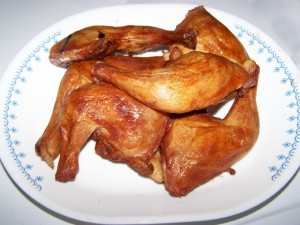
The Final Product
Michael Pollan is featured in talking head scenes throughout the film. I had heard of Mr. Pollan from reading customer comments on Amazon.com for various low-carb diet books and after seeing him in Food, Inc. I’m motivated to pick up a copy of his Omnivore’s Dilemma. He’s so well-spoken, that he compels you to listen.
Other people featured in the film are Barbara Kowalcyk, a food safety advocate whose son died after eating a hamburger contaminated with the E. coli bacteria, Joel Salatin of Polyface Farms, and Gary Hirshberg the founder of Stonyfield Farm. Ms. Kowalcyk’s story moved me the most.

Taking The Case to Congress
It’s unimaginable to have your smiling and happy child taken from you in such a painful way. The description of what it’s like to die from E. coli poisoning is gut-wrenching. As sad as her story is, it also takes an inspiring turn. The film follows Ms. Kowalcyk and her mother as they travel to Washington, DC to meet with their state senator and then testify at a Congressional hearing on food safety. Ms. Kowalcyk discovered that the tainted package of meat that killed her son was part of a batch that was eventually recalled – after her son had become stricken. The only conclusion that we can draw is that the needless death of her child was the result of unrestrained and unrepentant greed. Ms. Kowalcyk and her mother are fighting the good fight on behalf of all of us.
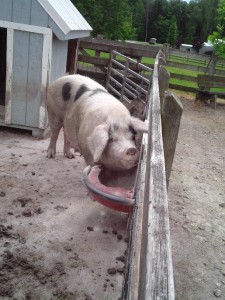
Happy Down on the Farm!
The film then takes a bit of a goofy turn, at least that’s the way it struck me, when we’re taken on a field trip to visit Joel Salatin down on his Polyface Farms. If we’ve been wondering where Farmer Brown and Bessie have gone, then Mr. Salatin, dressed in bib overalls and a straw hat, may provide some clues. Perhaps Farmer Brown went into the Witness Protection Program and has reinvented himself as the “entrepreneurial farmer.”
In the Shenandoah region of Virginia, he operates a farm that raises chickens, cows, and pigs. He even gives a huge porker a big affectionate hug. He “shows and tells” us the humane and environmentally friendly ways he raises his livestock – cows are grass-fed, chickens are free to roam and are then slaughtered the good old-fashioned way: yanked through a funnel contraption where their throats are then expertly slit with a very sharp knife. Even the blood that spurts everywhere looks to be wholesome.
Apparently, the Polyface Farms way of farming is good for business. We’re shown people that have come a great distance to shop there. When asked about expansion, Mr. Salatin says it’s not his goal to get really big and he’s not sure what he’ll do if demand exceeds his supply.
I found that to be a key point: you can’t scale a business like this. Its capacity for expansion is limited by the available land and labor, both of which are rather limited in this operation, but that’s the very thing that makes it unique and wholesome. I suppose more land could be devoted to local farming operations like this, but then how do you feed a country of over 300 million people with this kind of model? I’m thinking you can’t.
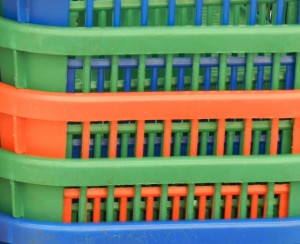
Big Box Goes Organic
To get a fuller idea of the direction the market for all things organic is going we’re then taken on a visit with Gary Hirshberg down on his Stonyfield Farm – a much bigger operation than Polyface Farms. Our visit comes in the midst of negotiations with none other than Wal-Mart. It seems that even the big box retailers can no longer ignore the drumbeat of increasing demand by their customers for healthier food options. This segment of the film I found unintentionally funny or maybe it was intentional as I can imagine the films’ creators winking at us off camera.
The tension and seeming disdain on both sides for the other is palpable. The Wal-Mart reps dressed in new down jackets look like they would prefer to be anyplace else than out in the middle of nowhere in some godforsaken field, “Is that spinach I’m standing in or is it kale? Who gives a shit!” And speaking of kale, McDonald’s just announced that kale will be a new menu option. It seems that even the great Mickey D’s is scrambling to appease the health movement in the wake of declining sales of their traditional junk fare.
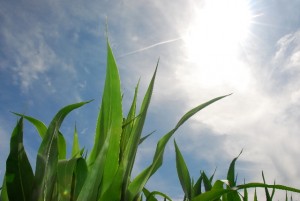
Corn is King!
The segment on corn is perhaps the most revealing of how agribusiness operates and just how powerful it has become. When a commodity is sold below its cost of production, then something is up and alarm bells should be going off. The horror story of the death grip Monsanto has on corn and soy bean seeds is pretty well-known. Such absolute control over a key staple of agriculture harkens back to the dark days of tenant farming.
Farmers caught in “illegal” possession of seeds containing patented Monsanto DNA are subject to visits from large, intimidating “representatives” and financially destroying law suits. By way of example, the film tells the story of a “seed cleaner” who is mercilessly pursued by Monsanto. The profession of a seed cleaner is a venerated one that goes back to frontier days. He’s a professional that sifts through harvest residue to extract useable seeds to be used to grow the next season’s crops.
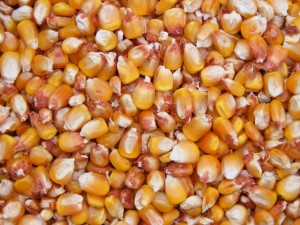
Is it Monsanto’s or is it Mother Nature’s?
The poor fellow featured here predictably and invariably gets caught in Monsanto’s web. It’s impossible not to get cross contaminated with Monsanto’s seeds. It just takes a strong gust of wind to blow a single seed from a neighboring field planted from Monsanto seed to come over into a field that isn’t. It’s truly head-scratching that such a monopoly is allowed to exist. Do America’s anti-trust laws have any teeth at all anymore?
What’s a bit puzzling is this is the extent of the discussion on GMOs – nothing regarding the uproar over health concerns arising from them. I also found it perplexing that there is no discussion of the demand that the energy industry places on corn production by way of ethanol. I suppose that there was only so much that the film was able to cover. Like agribusiness itself, it consists of a huge set of topics.
The mistreatment of both animals and people involved in agribusiness is cause for major concern. And there is also the environmental toll, which the film doesn’t touch on much at all. As for the human toll beyond the one exacted on farmers, we’re briefly shown the mistreatment of farm workers. The film informs us that prior to the emergence of agribusiness, being a meat packer was a decent job for the American middle class worker, especially after the reforms made to the Chicago meat packing industry in the wake of Upton Sinclair’s The Jungle and the ensuing outrage it generated.
In recent years, the jobs of the lowest paid poultry workers have changed hands from poor whites and African Americans to Hispanic workers, many of them illegal aliens. Law enforcement agencies make token roundups of illegals primarily for show, but not enough to impact production. We’re told that the big companies have an arrangement with law enforcement to allow for such a homeostasis to exist.
Food, Inc. shows us the problems with the way our food is produced, and they are many. But what’s the solution?
Should we all swear off eating animal products and become vegans? That’s a place I can never go. Even only buying locally raised meat, poultry, eggs, and dairy products is impractical for many, though it’s a good place to start. And protesting by not consuming products delivered to us by big agribusiness will probably have little to no effect. Do you think they’re even going to care?
Yes, things need to change and change is coming about slowly, but that change is probably going to take decades. The necessary changes will gradually occur via grassroots efforts like those of Ms. Kowalcyk and with more pressure from the rest of us placed on the US Government to act. But the reality remains that you need some kind of industrial infrastructure on the scale of agribusiness to produce a ready supply of food to a country with over 300 million hungry mouths that need to be fed. There’s no turning back on this, but as the species at the top of the food chain we need to be better than we currently are.
Food, Inc. is a good documentary film. It both educates as well as thoroughly entertains.